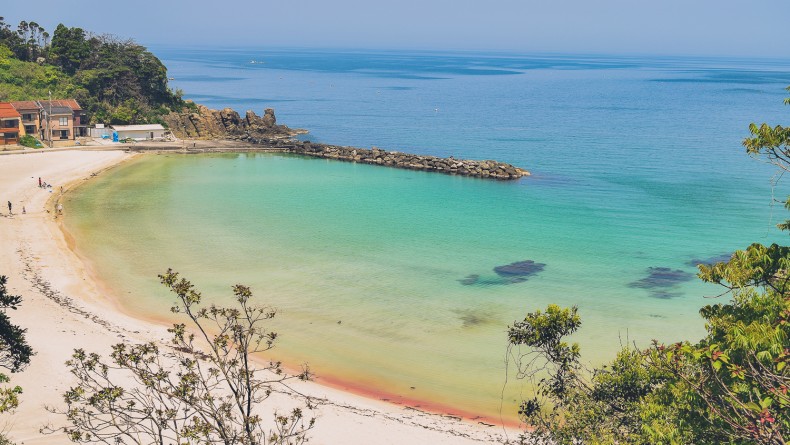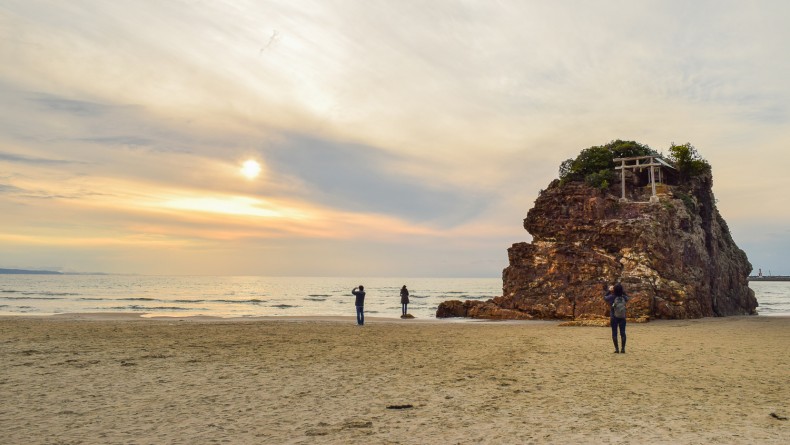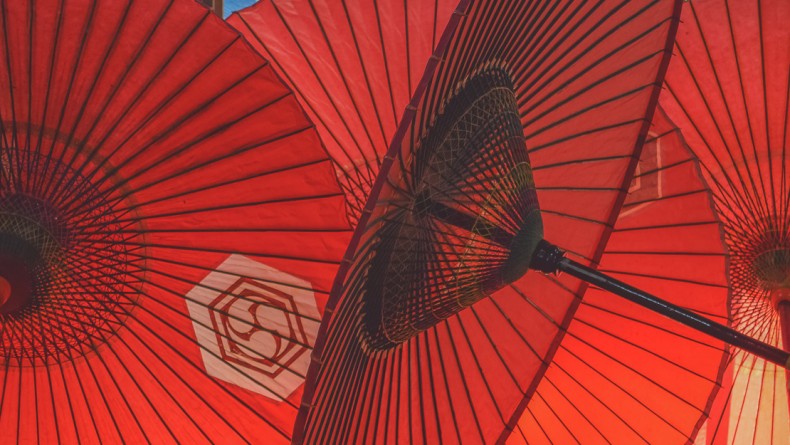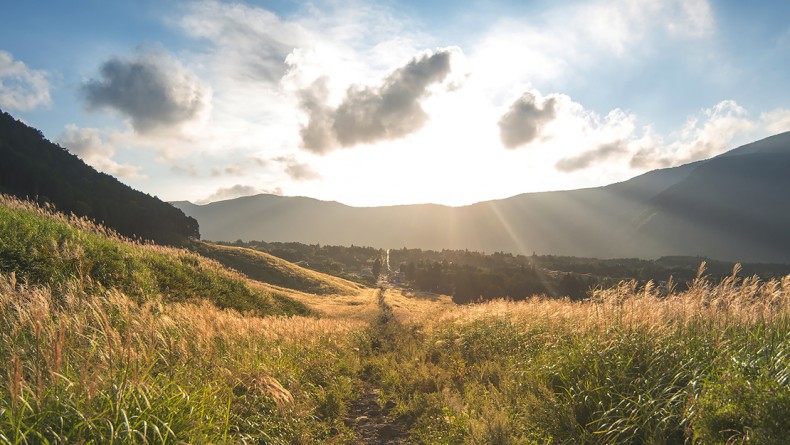Communing With the Gods on Miyajima
Miyajima is apparently where God (or is it gods?) lives. That seems like a fairly compelling reason to visit, and looking back at the island from the sea on our first morning there, it wasn't hard to believe that even deities might think this was a good place to call home. It was pouring with rain (perfect weather for a swim), the sea was steely gray, the sky gun-metal dark and everything was shrouded in mist, which rolled off the mountains and completely hid Hiroshima, on the other side of the channel, from view. We'd swum out to a tiny shrine on a sandbank island where a cormorant had just landed, and there wasn't another person in sight. Miyajima was an ageless, mysterious blur of forest and hills in shades of green darkening to black, ringed by a magnificently desolate strip of beach; the perfect setting for meditations and religious rites.
We’d arrived the night before after an epic day of travel. It would have been less epic—completely manageable in fact—with only adults, but we were two families with two children each, a traveling circus of strollers and luggage and hollering. Miyajima is a tiny island with no traffic signals, a fact reflected in its public transport, which amounts to a shared minivan every hour or so and one taxi, both of which stop circulating at 7 p.m. We arrived at 7:10 p.m. Night had begun to fall and all four children (two toddlers, two babies) were in tears of one kind or another as we started the 40-minute walk to the campsite. Luckily we didn’t have to walk far, as shortly after we started a saint in an impeccable people carrier stopped and offered to drive us. I wasn’t the only one in the group who nearly kissed him for his kindness (we all managed to restrain ourselves, fortunately for him and for future Japanese-gaijin relations). We arrived at the campsite in about seven minutes, and for the rest of our stay there we only took a bus once. On all of our other journeys we were driven by some kindly stranger, either because we looked so utterly woebegone and incapable, or because the people on Miyajima are all kind, warm, friendly people. I prefer to think it’s the latter.
Our trip took place over four days during which it was forecast to rain nonstop; as a result, the campsite wasn’t actually allowing tents to be pitched, so we stayed in two of the huts. They were huge, with a bedroom, a tatami-floored section, and a well equipped kitchen. Outside, there were plenty of picnic tables and the grounds seemed to go on forever, boasting volleyball courts, tennis courts, football pitches, ping-pong tables, woods, and lots of resident deer. The sea was a 30-second walk in front of us. We appeared to be the only people there (presumably other guests, especially Japanese ones, would have done outlandish things like check the weather forecast and plan their accommodation accordingly), until on a walk around the site we discovered a group who seemed to be having some kind of frat party in the woods. My husband said the whole atmosphere was like the camp in Dirty Dancing gone slightly to seed—as that’s his favorite film (yup), he was in heaven. Dinner was eel that we’d bought on the mainland, which we ate by candlelight on the picnic tables outside, the rain a soothing soundtrack to the meal (we’re British) and the deer a curious and suspicious audience. It was like the bit in a Scandi drama where nothing bad has happened yet—in a good way.
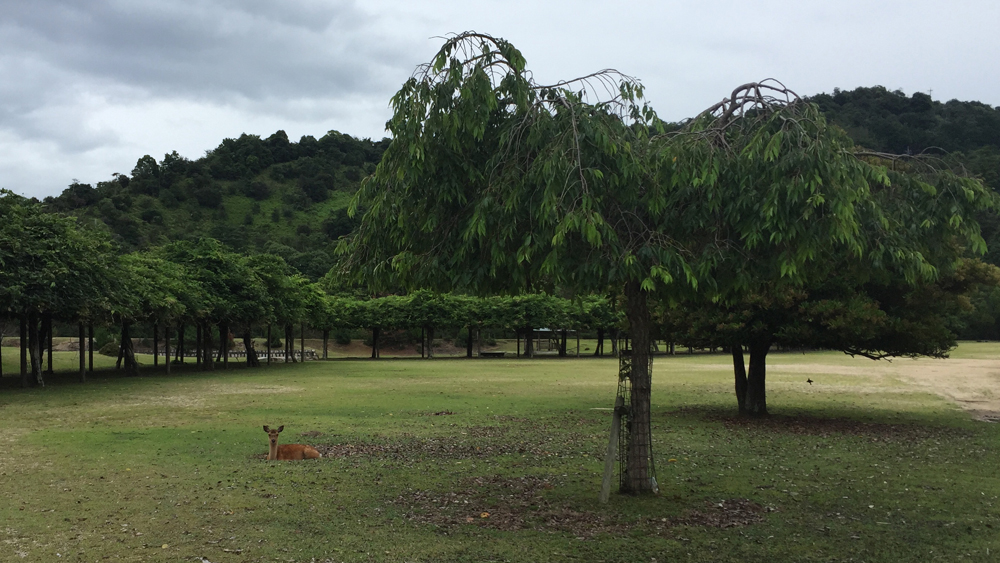
After our rainy swim the next morning, we prepared to dedicate a good few hours to possibly returning to the mainland for supplies—we’d been repeatedly warned by various people en route that there were no useful shops on Miyajima. Either these people had never been to Miyajima, or the advice was on the same well intentioned plane as the frequent and vociferous advice I get in Tokyo to take a taxi to locations you can walk to in two and a half minutes. The backstreets around the station boast all the tiny shops urbanites gush about when we go to the countryside—a minute bakery largely taken up by the oven, a grocer selling about five types of vegetables, a dark shop of mysterious provenance that appeared to sell old-fashioned kitchenware, but where the friendly proprietor sold us everything we asked for, in the exact quantities we wanted it (five cups of rice? No problem. Half a pat of butter? Of course. I now suspect she was just selling us things out of her own kitchen, so perhaps the naysayers had a point). The very pretty and atmospheric main thoroughfare is crammed with gift shops, restaurants, and unexpectedly excellent coffee shops. All the shops are completely traditional and all the wares on offer as enticing as silver spoons to a magpie (or indeed shamoji to tourists—apparently the flat spoon used to serve rice was invented here by a monk and is a popular souvenir), that it took us the best part of an hour to meander down it. No doubt at high season, the volume of human traffic on it could get pretty overwhelming. Even on the spectacularly vile (weatherwise) day that we visited, there were enough tourists to populate it cheerily. Restaurants side by side all sell subtly different okonomiyaki (a Japanese savory pancake)—I have no idea what the unique characteristic of ours was, but it was delicious.
The next day, we made our way to the top of Mt. Misen. After parking the strollers in the designated spot at the bus stop and strapping the babies to our backs, we headed to the ropeway. After a few minutes we were floating in a spectacular panorama of sea and sky, with a few mountains and clouds thrown in. The beauty and exhilaration of it managed to silence everybody, which is quite a feat. From Shishiiwa station, it is about a kilometer to the summit of Misen. Without the cable car (and perhaps not on three-year-old legs), there are several routes up Misen, between two and three kilometers long, taking you through forests, along rivers lined with maple trees, or up paved paths past waterfalls and temples. Our walk was beautiful, snaking under canopies of trees and up stone steps, breaking out into unexpected clearings with unbelievable vistas, and passing shrines fragrant with incense along the way. One of these was the so-called Lover’s Sanctuary, where burns the literal eternal flame—kiezu no reikado—which has been burning for over 1,200 years, and which was used to light the the flame of peace at Hiroshima’s Peace Memorial Park. Passing through more beautiful scenery, we managed to reach the top with everyone in good spirits, and even if we hadn’t, the incredible view and the mountain calm would have restored them.
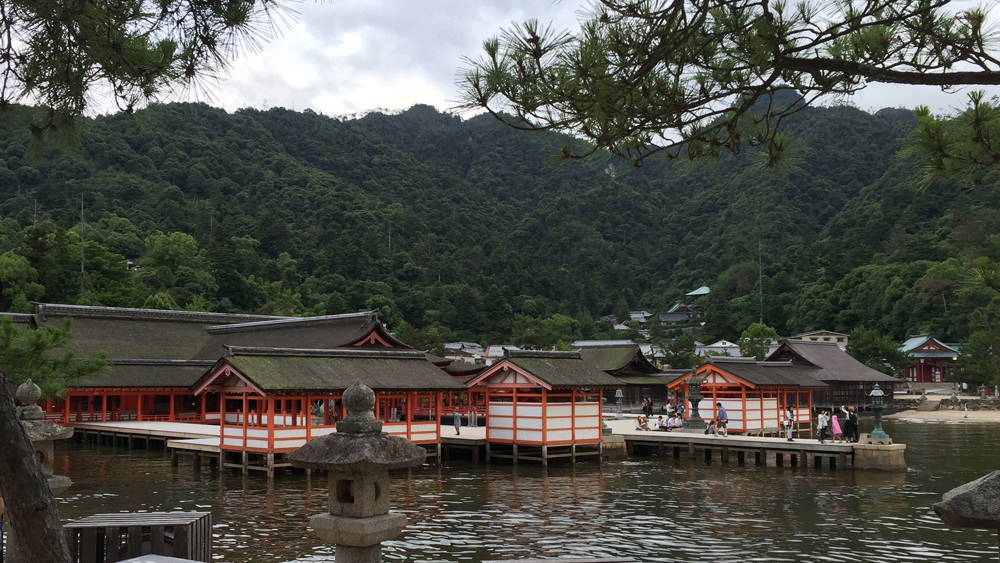
Back at the bottom, we wandered around Itsukushima Shrine, built over the water’s edge and against a backdrop of forest, a love song to Japanese religious architecture composed in red and white. Nobody seems quite sure of why the “floating shrine” was built this way—some have suggested it’s because the enshrined goddess is the goddess of water, others that it’s connected with the belief that souls cross over to the next world by boat. Paper lanterns line the open wooden corridors, and every angle provides a cliched and perfect photo opportunity—wooden bridges, priests in full regalia hurrying across the gardens, and of course, the magisterial torii (the scarlet painted gates between the human world and the spirit world) on the water. It’s little wonder that Itsukushima is a World Heritage Site, and has been rebuilt repeatedly since its origins in about the ninth century AD (it has been destroyed many times, by natural disasters and by the epic battles that have taken place on the island). The torii can be visited on foot at low tide, or cruised under by boat at high tide, a particularly atmospheric ride after dark.
By now it was late afternoon, and post-hike, we were getting cold. We bought some warm mini castellas from a stall, then found they were very popular with the deer who, undeterred by his initial shrieking and emboldened by their status as holy animals, tried their utmost to steal it out of the toddler’s hand. Eventually he found it hilarious, and took the opportunity to stroke and touch heads with the deer (unclear if this was a friendly nuzzle or a precursor to a stag-like headbutt. Knowing my son, probably the latter). I probably wouldn’t actually advise that children go to Miyajima and headbutt and manhandle the wildlife (particularly wildlife that’s supposed to carry messages from the gods), but my children spend the majority of their time doing things I wouldn’t actually advise.
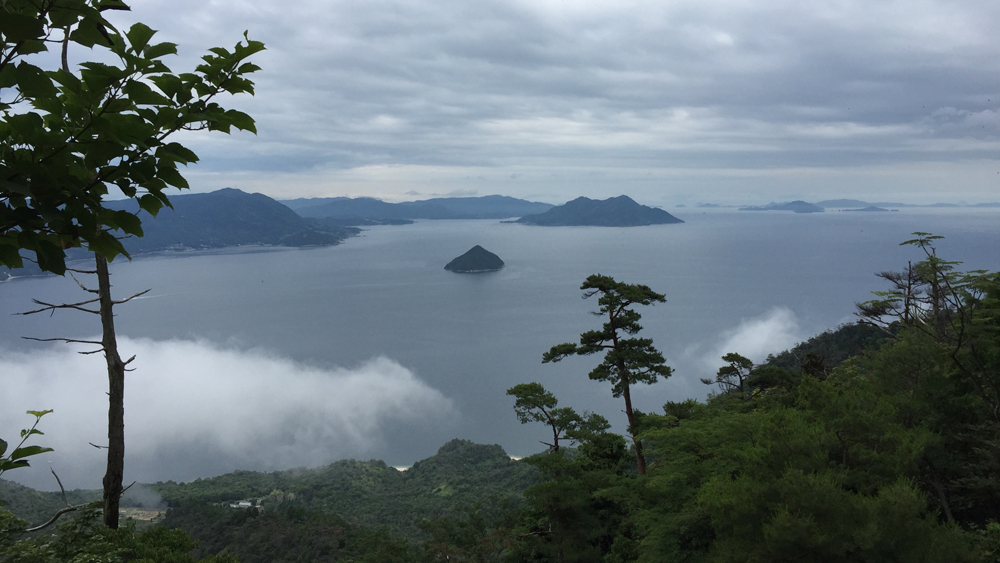
Now shivering slightly, we started to dream of an onsen, and were told there was one we could use in a ryokan on the seafront. It was perfect; not very big, but equally not very crowded. The children were delighted and everyone was warm—nothing, surely, feels better after a hike (even one that was admittedly not very long, but still very invigorating). That night we feasted outdoors on our supposedly unprocurable food, while the children alternated eating with “herding” the deer in their pajamas.
The next morning the rain miraculously stopped and we went swimming again—it was like being in a different location, with Hiroshima suddenly looming very close and very industrial-looking across the channel. The children built sandcastles and paddled until the babies had to be put to sleep in their prams, swaddled in all the clothes we had and falling asleep sitting bolt upright as a result. It was warmer than it had been on the first day, and beautiful in bright blue and green, but somehow I preferred swimming in the gray we’d first had, under the romantic illusion that we were the only people on an ancient, sacred Japanese island far from anywhere.
The Deets
Getting there: From Tokyo, take the shinkansen to Hiroshima. The Nozomi departs from either Tokyo or Shinagawa station and takes just under four hours. From Hiroshima, take the JR Sanyo line to Miyajimaguchi (about half an hour), and from there it’s a ten-minute ride on the Miyajima ferry to Miyajima.
Where to stay: Tsutsumigaura Nature Park offers huts as well as tents for rent, or you can bring and pitch your own tent for a nominal fee. If you’d prefer some more modern comforts, there are plenty of ryokan and guesthouses on the island, many of them in the area surrounding Itsukushima Shrine. Kinsuikan ryokan has a great indoor onsen that you can use even if you’re not a guest.
When to visit: Clearly classic times to visit would be spring and autumn, when the cherry blossoms or maple leaves are at their most spectacular. In the summer, watersports are popular. But it turns out Miyajima is still pretty gorgeous in the rain and the cold too.
More info: To read more about Miyajima, visit its official tourism website, available in six languages.









